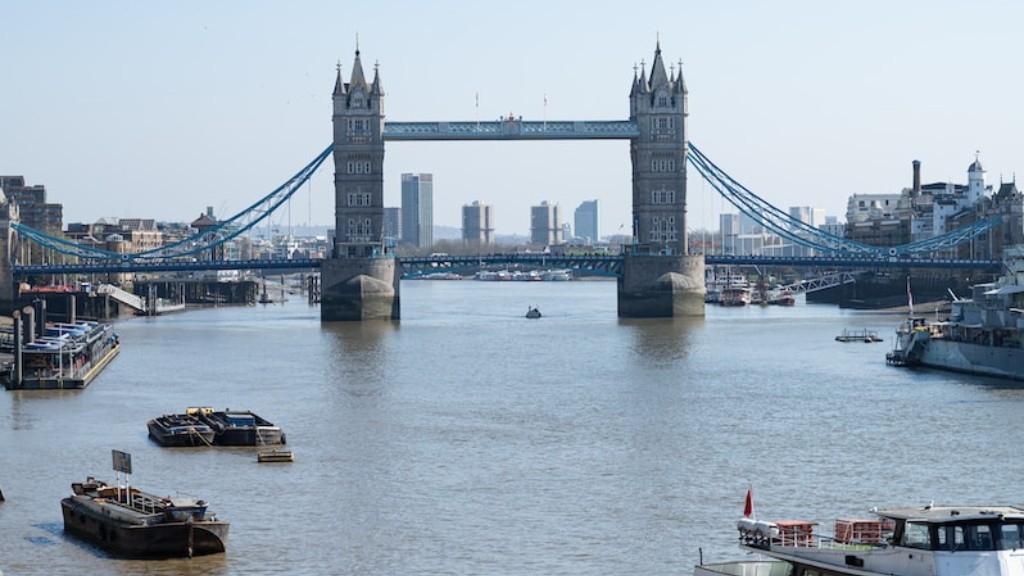In the 1830s, Queen Victoria’s accession to the throne changed the country forever. She was the first female ruler of the House of Hanover and remains Britain’s longest-reigning monarch, reigning for 63 years. During Queen Victoria’s reign, she was a frequent traveler – traveling to Scotland and other parts of the U.K. often. In this article we will explore how the Queen traveled from London to Scotland during the 1800s.
The first mode of transportation that Queen Victoria used was horse-drawn carriages. She owned several of these carriages for longer trips and other travel. The carriages were custom made, sitting four to six people and could reach speeds of up to 12 miles per hour. This mode of transportation was efficient but slow. It would take the Queen around 25 hours to travel from London to Scotland, with stops along the way to eat, rest and freshen up before continuing the journey.
Steam trains also proved to be an effective mode of transportation for Queen Victoria. Steam locomotives were introduced in the 1830s by George Stephenson, an English engineer and inventor. These trains had double the speed of the carriages and by the late 1840s were able to transport passengers to destinations up to 50 miles away. By this time, steam trains had become popular amongst the British elite and Queen Victoria was no exception.
With the introduction of the Great Northern and Great Western Railway, the journey from London to Scotland was further reduced. During the 19th century, Britain’s railway network had stretched nationwide and it became possible to travel to Scotland in a matter of hours. Queen Victoria took full advantage of this innovation and was often seen making the journey to Scotland.
The final advancement that allowed Queen Victoria to travel with convenience was the introduction of the steamship. Steam ships were commercially introduced in the 1840s and were a much faster mode of transportation. It only took 10 hours to reach Scotland if the weather was favourable. As a result, Queen Victoria was able to make many trips to Scotland without having to spend long periods of time on the road.
In conclusion, Queen Victoria had a number of different options for transportation when travelling from London to Scotland during her reign. Horse-drawn carriages, steam trains and steam ships were the main transportation choices of the time, but with advancements in technology, Queen Victoria was able to make the journey more efficiently and with greater comfort.
Development of Transitional Technologies
Technologically, 19th century was the time of rapid transition. The new inventions made travelling easier and much faster. As a consequence of technological developments, Queen Victoria was able to go from London to Scotlandnot in 25 hours taken by horses but in less then 10 with steam ships.
In the 1830s, George Stephenson came up with the idea of steam locomotives. His invention made transportation much faster and efficient. This invention was key contributor of the development of the first public railway network, which later on was extended on a national level. This network made it easier to travel throughout Britain.
In the 1840s, steam ships became commercially available. They revolutionised the maritime industry, providing a more efficient mode of transportation, even for longer distances. These ships allowed Queen Victoria to make trips from London to Scotland much faster.
In the 1840s, the Royal Mail service initiated the expansion of the railway network, allowing people to communicate quickly and efficiently. This development connected cities and made it much easier for people to travel longer distances.
Overall, the 19th century was the time when modern technologies were developed, making the transportation easier, faster and more efficient. These technological advancements allowed Queen Victoria to make frequent trips to Scotland from London.
Political Situation at the time of Queen Victoria’s Travel
During Queen Victoria’s time, Britain was in a period of industrial growth and political change. Throughout her reign the social and political landscape of the United Kingdom was in a state of flux.
In the 1830s, a new political ideology known as liberalism was introduced by the Whig Party. This ideology was based on the idea of reform and it called for social and political reform. This ideology had the support of Queen Victoria and she actively supported reform initiatives in her country.
The same period also saw the emergence of new labor movements. Unions were formed and demands for better wages and working conditions were made. These demands were met and labor laws were changed. This improved the living conditions of people in Britain, making it possible to travel in a more comfortable and efficient way.
In the 1840s, the European continent was in a great political turmoil. Many of Europe’s ruling dynasties were overthrown and new governments were established. This period also saw the unification of Germany and Italy, which changed the balance of power in Europe.
Throughout her reign, Queen Victoria worked to improve the social and political landscape of her country. She supported liberal reforms and encouraged people to travel throughout Britain in a convenient and efficient way.
Achievements of Queen Victoria
Queen Victoria was an influential ruler who succeeded in improving the social and political environment in Britain. Her contributions can be seen in a number of ways.
In the 1830s, she changed the traditions that previously gave the men more rights than women. She also abolished the death penalty for certain crimes. This allowed people in Britain to live in a more just society.
In the 1840s, Queen Victoria encouraged trade and commerce. She encouraged education and reformed the legal system. This reform made it easier for people to do business and paved the way for modern economic growth.
In the 1850s, she supported a number of civil and maritime rights, which allowed people to travel around the world in a faster and safer way. This was especially true with the introduction of the steamships.
Lastly, Queen Victoria was a strong advocate of liberty and freedom. She abolished the slave trade in the British Empire and worked towards the abolition of feudalism and slavery in British colonies. All of these contributions improved the lives of people in Britain and made it much easier for them to travel.
Impact of Queen Victoria’s Travels
Queen Victoria’s frequent travels to Scotland had a great impact on her country and the people of Scotland. These trips brought the two nations closer, enabling people to interact and learn more about each other’s cultures.
Queen Victoria was a symbol of a unified Britain. Her trips to Scotland were nationally televised and broadcasted, showing the people of England and Scotland that they are united. This fostered a sense of unity and pride throughout Britain.
The Queen also brought about a sense of progress and modernity. The new mode of transportations made travelling faster and more efficient and it enabled the people of Britain to see the country’s progress and development.
Lastly, the Queen’s travels promoted the cultural, economic, and political growth of both England and Scotland. The two nations benefited from the Queen’s presence and her visits helped to bridge the gap between the two nations.
Modern Travel Experience
Today, travelling to Scotland from London is much faster and easier. The journey can be completed in as little as four hours, thanks to advances in modern transportation. Today, it is possible to travel by air, rail and road with ease, making the journey quick and convenient.
However, Queen Victoria’s experience of travelling to Scotland is still remembered. For example, it is still possible to travel by steam train or steam ship today, providing a unique experience for travellers.
Overall, it is clear that Queen Victoria’s influence on transportation changed the way we travel today. Her use of advancements such as steam locomotives and steam ships allowed her to travel around Great Britain with greater ease and comfort. This has allowed us to enjoy the luxurious and convenient journey of travelling to Scotland today.





